Centipedes, with their numerous legs and elongated bodies, have fascinated and terrified humans for centuries. Among these arthropods, certain species stand out due to their impressive size, venomous nature, and unique hunting strategies. This article delves into the largest centipedes in the world, exploring their lengths, scientific names, key features, and intriguing behaviors. Join us as we uncover the secrets of these remarkable creatures.
10. Mediterranean Banded Centipede
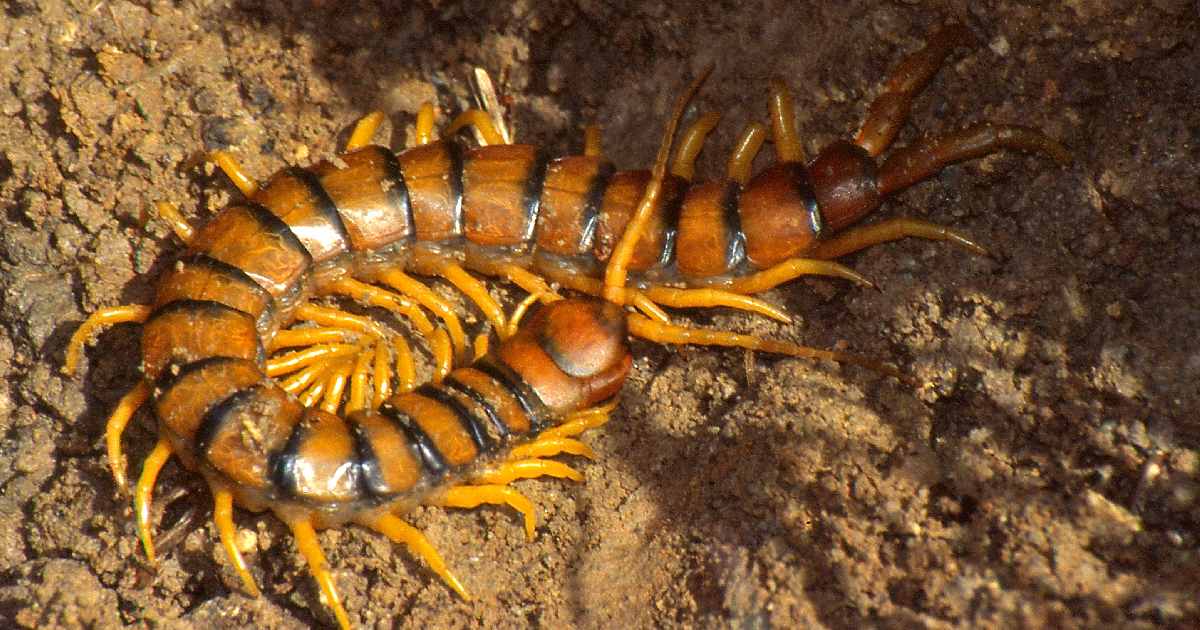
- Length: Up to 6 inches
- Scientific Name: Scolopendra cingulata
- Key Features: Distinctive black bands, Found in Mediterranean regions
The Mediterranean Banded Centipede, scientifically known as Scolopendra cingulata, is one of the largest centipede species found in Europe. These centipedes can reach lengths of up to 6 inches, making them formidable predators in their habitats. They are easily recognizable by their distinctive black bands and vibrant coloration.
These centipedes prefer moist environments such as forests, grasslands, and even human dwellings where they can find prey like insects and small invertebrates. The Mediterranean Banded Centipede is known for its aggressive hunting style, using its powerful venomous fangs to subdue prey. Despite their fearsome appearance, they play a crucial role in controlling insect populations and maintaining ecological balance.
9. Tanzanian Blue Ring Leg

- Length: Up to 8 inches
- Scientific Name: Scolopendra morsitans
- Key Features: Blue-ringed legs, Highly venomous
The Tanzanian Blue Ring Leg, or Scolopendra morsitans, is a striking centipede species native to East Africa. These centipedes can grow up to 8 inches long and are known for their vibrant blue-ringed legs, which make them easily distinguishable from other species. Their colorful appearance serves as a warning to potential predators of their highly venomous nature.
These centipedes inhabit a variety of environments, from forests to savannas, where they hunt insects, spiders, and small vertebrates. The Tanzanian Blue Ring Leg is a highly efficient predator, using its venomous claws to immobilize prey quickly. Despite their fearsome reputation, they play an important role in their ecosystems by keeping insect populations in check.
8. Banded Desert Centipede
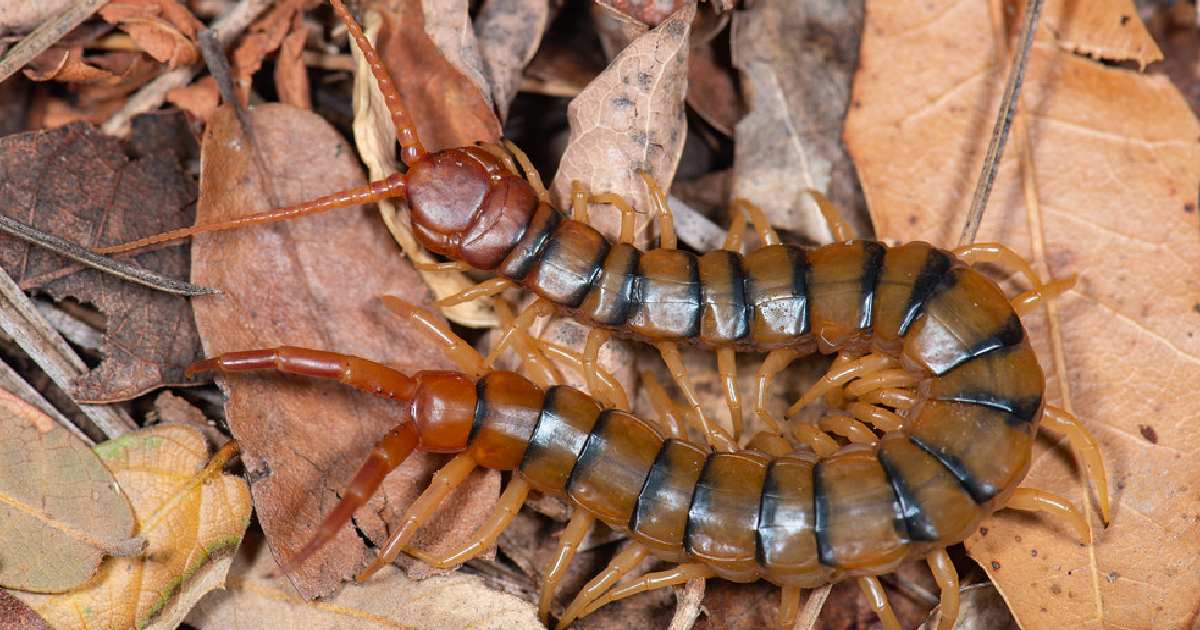
- Length: Up to 7 inches
- Scientific Name: Scolopendra polymorpha
- Key Features: Distinctive banded pattern, Adapted to arid environments
The Banded Desert Centipede, or Scolopendra polymorpha, is a large centipede species native to the deserts of North America. These centipedes can grow up to 7 inches long and are easily recognized by their distinctive banded pattern and coloration. They are well adapted to arid environments, where they can find shelter and hunt for prey.
This giant desert centipede is a highly efficient predator, using only a few legs with poisonous fangs to subdue a variety of prey, including insects, spiders, and small vertebrates. Despite their intimidating appearance, they play a crucial role in controlling pest populations in their habitats. The Banded Desert Centipede’s ability to thrive in harsh environments is a testament to their adaptability and resilience.
7. Indian Tiger Centipede

- Length: Up to 8 inches
- Scientific Name: Scolopendra Hardwickei
- Key Features: Striking orange and black bands, Highly venomous
The Indian Tiger Centipede, scientifically known as Scolopendra Hardwicke, is a striking centipede species found in India and Southeast Asia. These centipedes can grow up to 8 inches long and are easily recognizable by their striking orange and black bands, which give them their common name. Their vibrant coloration serves as a warning to potential predators of their highly venomous nature.
These centipedes inhabit a variety of environments, from forests to grasslands, where they hunt insects, spiders, and small vertebrates. The Indian Tiger Centipede is a highly efficient predator, using its venomous claws to immobilize prey quickly. Despite their fearsome reputation, they play an important role in their ecosystems by keeping insect populations in check.
6. Texas Redheaded Centipede
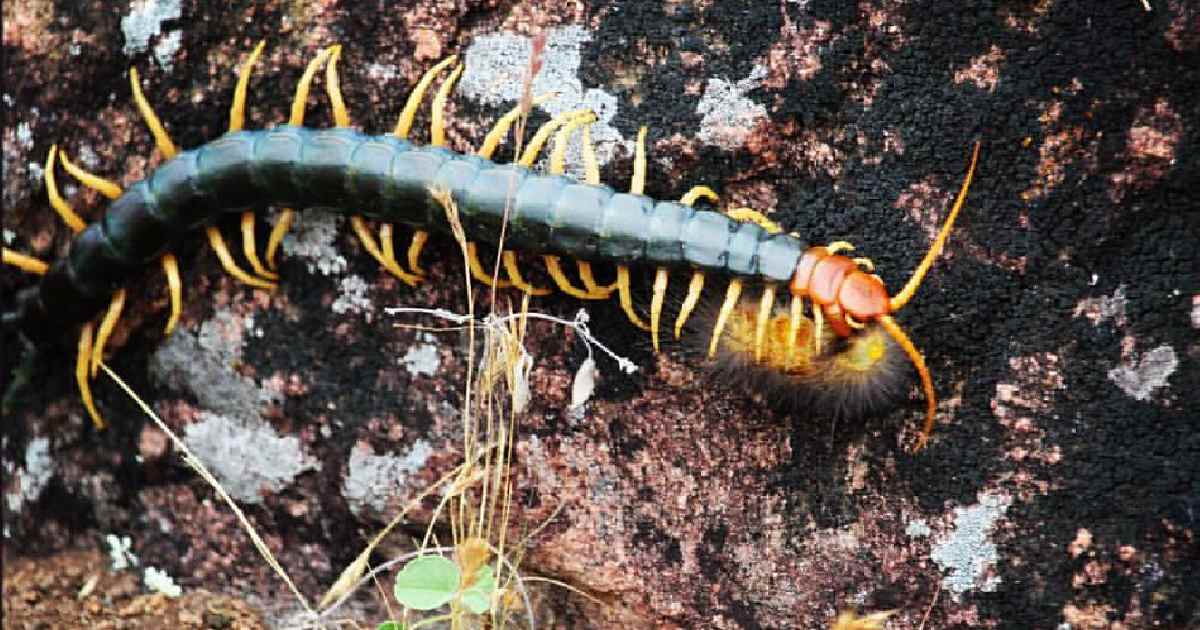
- Length: Up to 8 inches
- Scientific Name: Scolopendra heros
- Key Features: Redhead and yellow legs, Prefers warm, moist environments
The Texas Redheaded Centipede, or Scolopendra heros, is one of the largest centipede species in North America. These centipedes can grow up to 8 inches long and are known for their distinctive red head and yellow legs. They inhabit warm, moist environments such as forests and grasslands, where they can find ample prey.
These centipedes are highly efficient predators, using their venomous fangs to subdue a variety of prey, including insects, spiders, and small vertebrates. Despite their intimidating appearance, they play a crucial role in controlling pest populations in their habitats. The Texas Redheaded Centipede’s ability to thrive in a variety of environments is a testament to their adaptability and resilience.
5. Scolopendra viridicornis
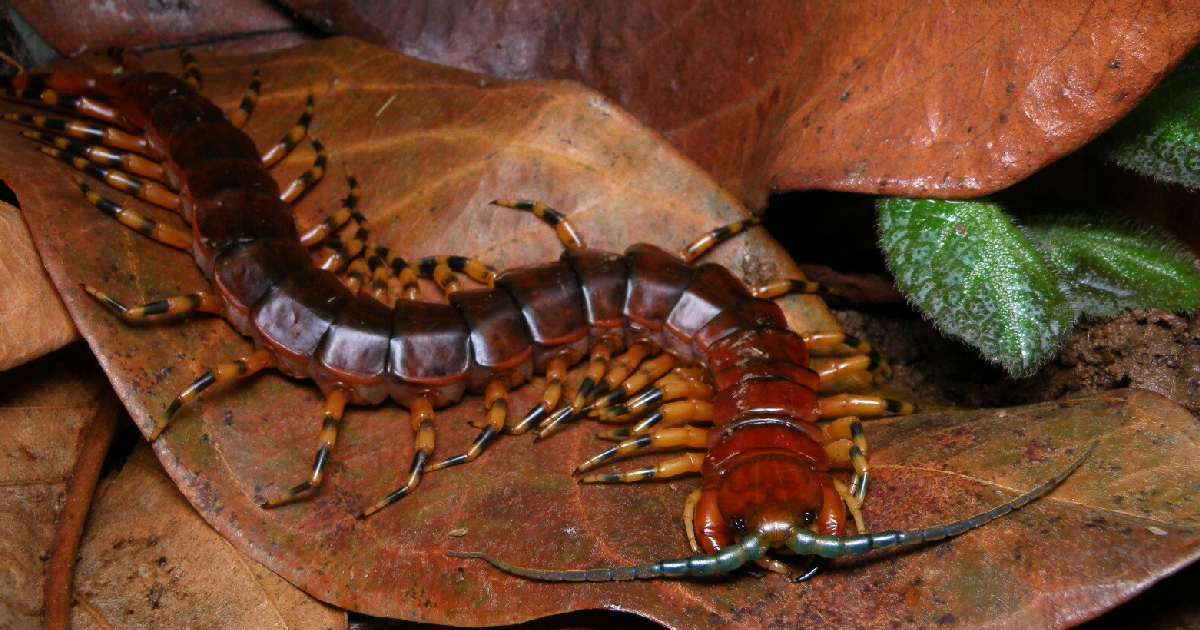
- Length: Up to 7 inches
- Scientific Name: Scolopendra viridicornis
- Key Features: Bright green head and legs, Highly venomous
Scolopendra viridicornis, a large centipede species native to South America, is known for its bright green head and legs. These centipedes can grow up to 7 inches long and are highly venomous, using their powerful claws to subdue prey quickly. They inhabit a variety of environments, from forests to grasslands, where they hunt insects, spiders, and small vertebrates.
Despite their fearsome reputation, Scolopendra viridicornis plays an important role in controlling pest populations in their habitats. These centipedes are highly efficient predators, capable of taking down prey larger than themselves. Their striking appearance and venomous nature make them a fascinating subject for study and observation.
4. Scolopendra cataracts
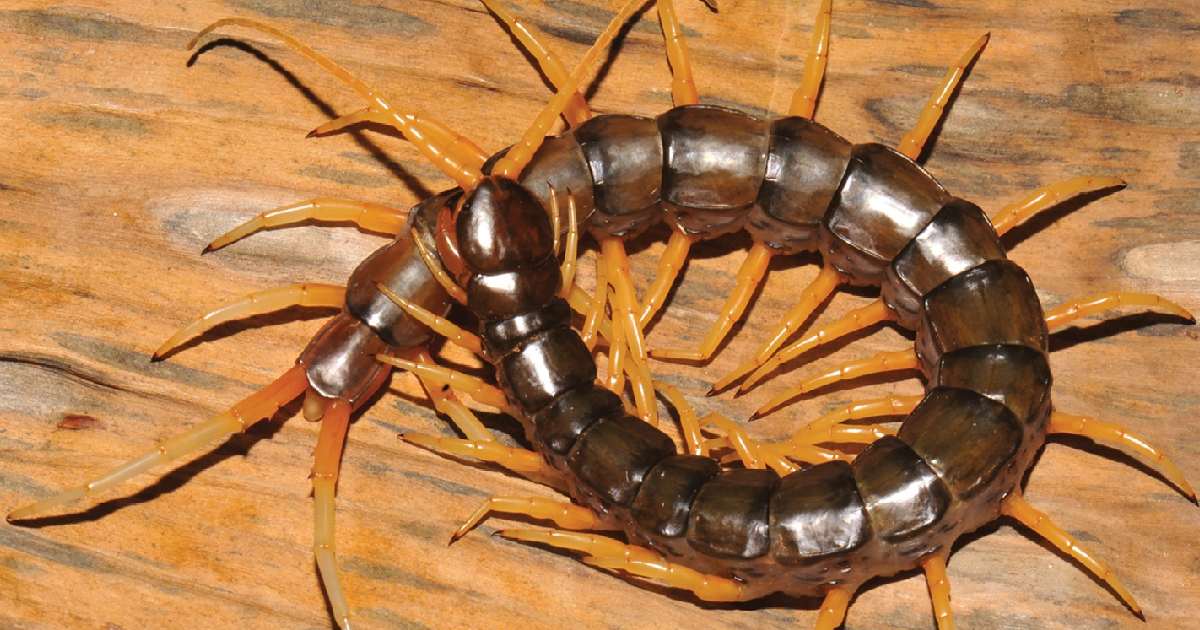
- Length: Up to 8 inches
- Scientific Name: Scolopendra cataracta
- Key Features: Amphibious capabilities, Highly venomous
Scolopendra cataracta, also known as the amphibious centipede, is a unique species found in Southeast Asia. These centipedes can grow up to 8 inches long and are known for their amphibious capabilities, able to move efficiently in both water and on land. They inhabit a variety of environments, from forests to riverbanks, where they hunt a variety of prey.
These centipedes are highly efficient predators, using their two curved hollow fangs to subdue prey quickly. Despite their fearsome reputation, Scolopendra cataracta plays an important role in controlling pest populations in their habitats. Their unique amphibious abilities make them a fascinating subject for study and observation.
3. Haitian Giant Centipede
- Length: Up to 10 inches
- Scientific Name: Scolopendra alternans
- Key Features: Large size and robust build, Highly venomous
The Haitian Giant Centipede, or Scolopendra alternans, is one of the largest centipede species found in the Caribbean. These centipedes can grow up to 10 inches long and are known for their large size and robust build. They inhabit a variety of environments, from forests to grasslands, where they hunt a variety of prey.
These centipedes are highly efficient predators, using their venomous claws to subdue prey quickly. Despite their fearsome reputation, the Haitian Giant Centipede plays an important role in controlling pest populations in their habitats. Their impressive size and venomous nature make them a fascinating subject for study and observation.
2. Chinese Redheaded Centipede
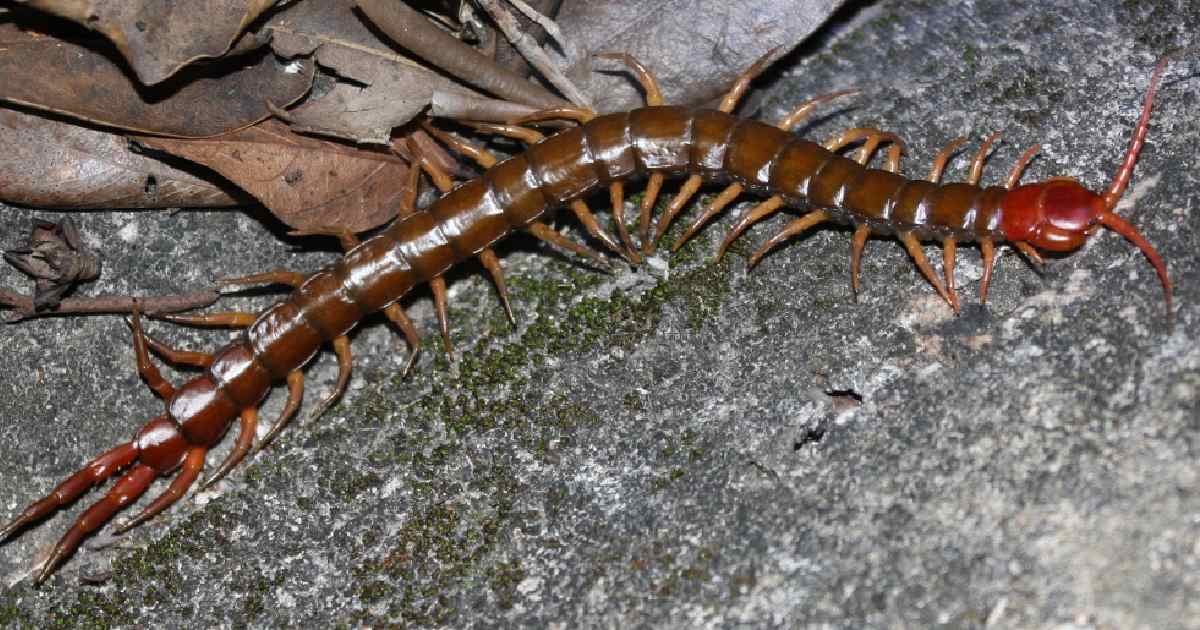
- Length: Up to 8 inches
- Scientific Name: Scolopendra subspinipes mutilans
- Key Features: Redhead and black body, Highly venomous
The Chinese Redheaded Centipede, or Scolopendra subspinipes mutilans, is a large centipede species native to East Asia. These centipedes can grow up to 8 inches long and are known for their distinctive redhead and black body. They inhabit a variety of environments, from forests to grasslands, where they hunt a variety of prey.
These centipedes are highly efficient predators, using their venomous claws to subdue prey quickly. Despite their fearsome reputation, the Chinese Redheaded Centipede plays an important role in controlling pest populations in their habitats. Their striking appearance and venomous nature make them a fascinating subject for study and observation.
1. Amazonian Giant Centipede
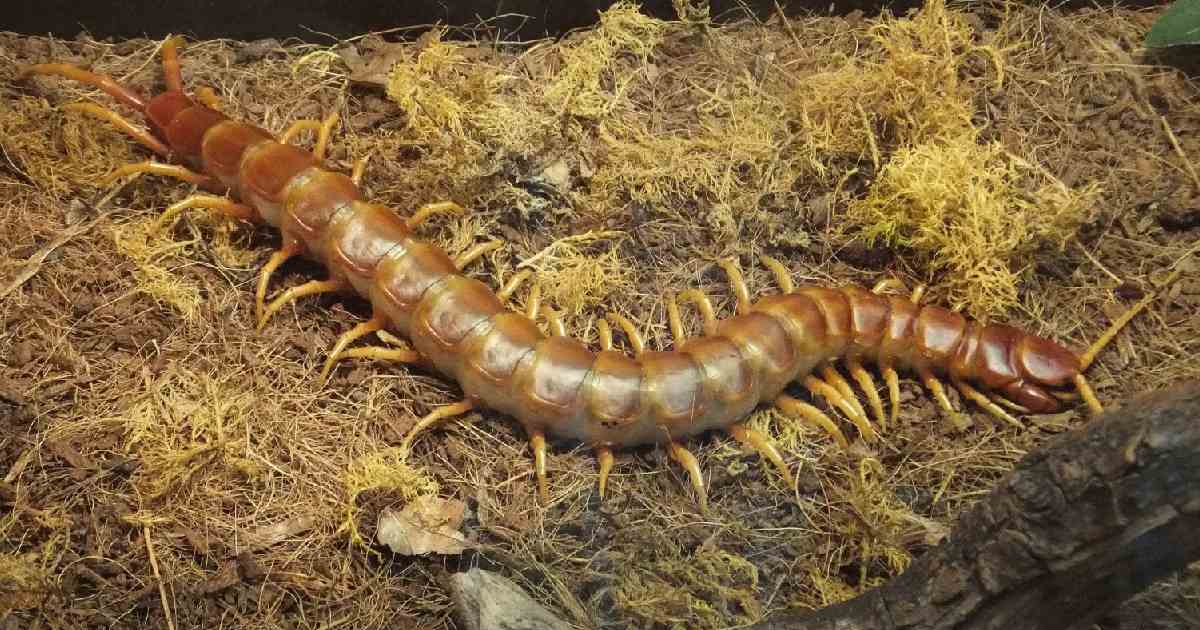
- Length: Up to 12 inches
- Scientific Name: Scolopendra gigantea
- Key Features: Largest centipede species, Highly venomous
The Amazonian Giant Centipede, also known as West Indies Scolopendra gigantea, is the largest centipede in the world, capable of growing up to 12 inches long. These giant tropical centipede are native to South America and are known for their impressive size and powerful venom. They inhabit a variety of environments, from tropical forests to grasslands, where they hunt a wide range of prey.
These centipedes are highly efficient predators, using their venomous poison claws to subdue prey quickly. Their diet includes insects, spiders, small mammals, and even birds and bats. Their ability to climb cave ceilings and employ unique hunting strategies makes them one of the most fascinating and formidable predators in the arthropod world. Despite their fearsome reputation, they play a crucial role in maintaining ecological balance by controlling pest populations.
Conclusion
The largest centipedes in the world are truly remarkable creatures, each with unique adaptations that make them formidable predators in their respective habitats. The tropical zoology allows us to discover the Amazonian giant centipedes in the tropical dry forest of South America, and the Chinese red-headed centipede in East Asia, these centipedes showcase the incredible diversity and adaptability of arthropods. Their impressive lengths, venomous nature, and hunting strategies highlight their significance in maintaining ecological balance. As we continue to study and appreciate these fascinating, we gain a deeper understanding of the complex and diverse world of arthropod-hunting mammals, centipedes.
Frequently Asked Questions (FAQs)
What is the world’s biggest centipede?
The Amazonian Giant Centipede, scientifically known as Scolopendra gigantea, holds the title of the world’s biggest centipede. Native to South America, this giant centipede can grow up to 12 inches in length. Known for its impressive size and powerful venom, the Amazonian Giant Centipede is a formidable predator that can take down various prey, including insects, small mammals, birds, and even bats.
Are giant centipedes aggressive to humans?
Giant centipedes can be aggressive if provoked, but they typically avoid human interaction. Species like the Amazonian Giant Centipede and the Texas Redheaded Centipede possess venomous claws used to subdue prey, which can cause painful bites to humans. While their venom is potent, it’s rarely fatal to humans. These centipedes are more likely to bite if threatened, so it’s best to admire them from a safe distance.
How big can a centipede get?
Centipedes can vary greatly in size, but the largest centipede, the Amazonian Giant Centipede (Scolopendra gigantea), can reach impressive lengths of up to 12 inches. Other large species, such as the Texas Redheaded Centipede and the Chinese Redheaded Centipede, can grow up to 8 inches long. These large centipedes are known for their powerful venom and effective hunting abilities.
Which centipede is poisonous?
Several centipede species are highly venomous, including the Amazonian Giant Centipede (Scolopendra gigantea), the Chinese Redheaded Centipede (Scolopendra subspinipes mutilans), and the Texas Redheaded Centipede (Scolopendra heros). These centipedes use their venomous claws to inject paralyzing venom into their prey, making them efficient hunters. Their venom can cause significant pain and other symptoms in humans.
What centipede has 1,000 legs?
No centipede has 1,000 legs. The name “centipede” means “hundred legs,” but most centipedes have far fewer, typically ranging from 15 to 177 pairs of legs. The misconception may arise from millipedes, which can have many more legs, although even they do not reach 1,000 legs. Centipedes are known for their segmented bodies, with each segment having one pair of legs.

